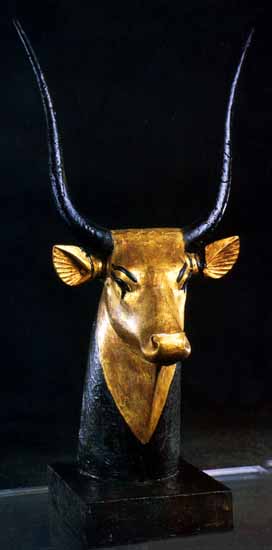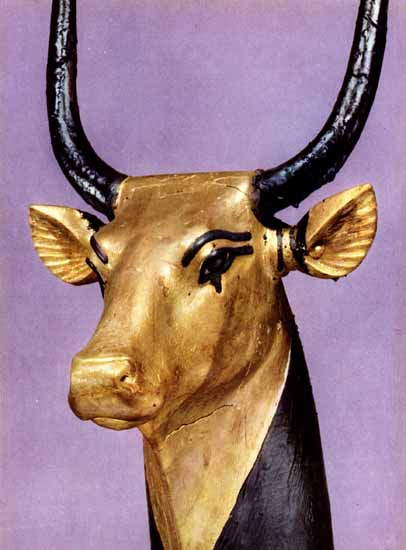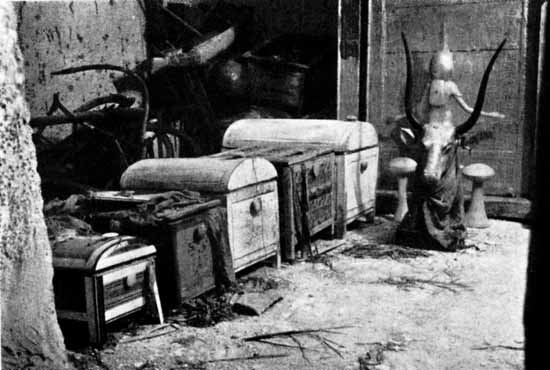-

-

-
-

- Photo taken during the original opening of Tutankhamun's tomb by Howard Carter.
- Carter described this piece, in his "The Tomb of Tut.Ankh.Amen", as "a strange head of a Cow".
- This exceptional piece is carved from wood with copper horns and the eyes are inlayed with Lapis Lazuli (in the shape of the eye of Horus). The head, ears and the front of the neck are gilded, the rest of the neck and pedestal are varnished with black resin (symbolizing the dark of the underworld).
-
- The piece represents Mehit-Weret, an aspect of the cow-headed goddess Hathor. Hathor was the goddess of Joy and love, who welcomed the setting sun and the spirits of the dead into the underworld.
-
- Mehit-Weret (Cow goddess of the sky). Her name means 'great flood'. In the Pyramid Era Mehet-Weret represents the waterway in the heavens, sailed upon by both the sun-god and the king. She is also a manifestation of the primeval waters - consequently being sometimes considered as the 'mother of Re'. From vignettes in the New Kingdom funerary papyri the goddess is pictured as a cow lying on a reed mat with a sun disk between her horns.
-
Luxor Museum, Egypt.